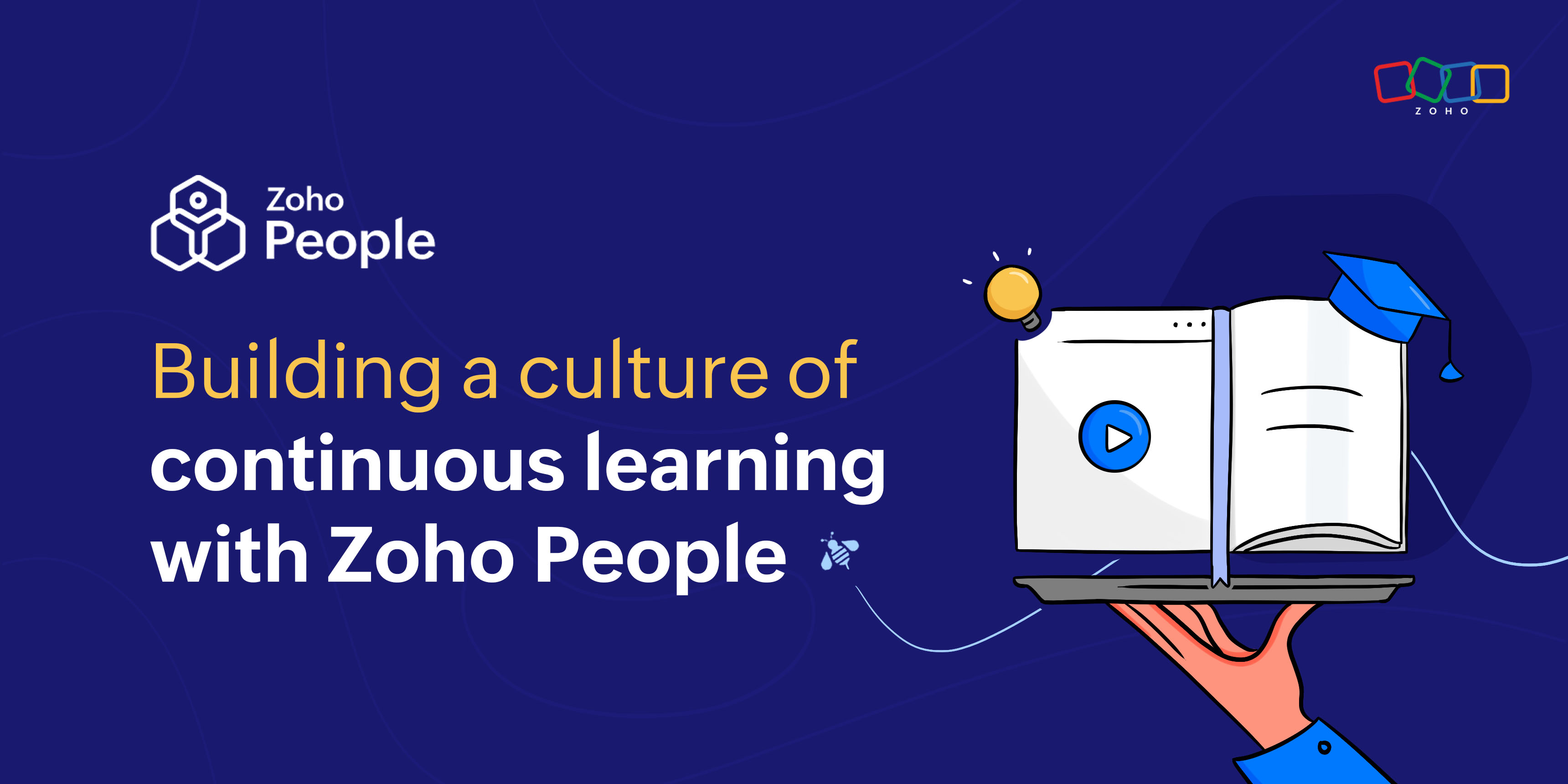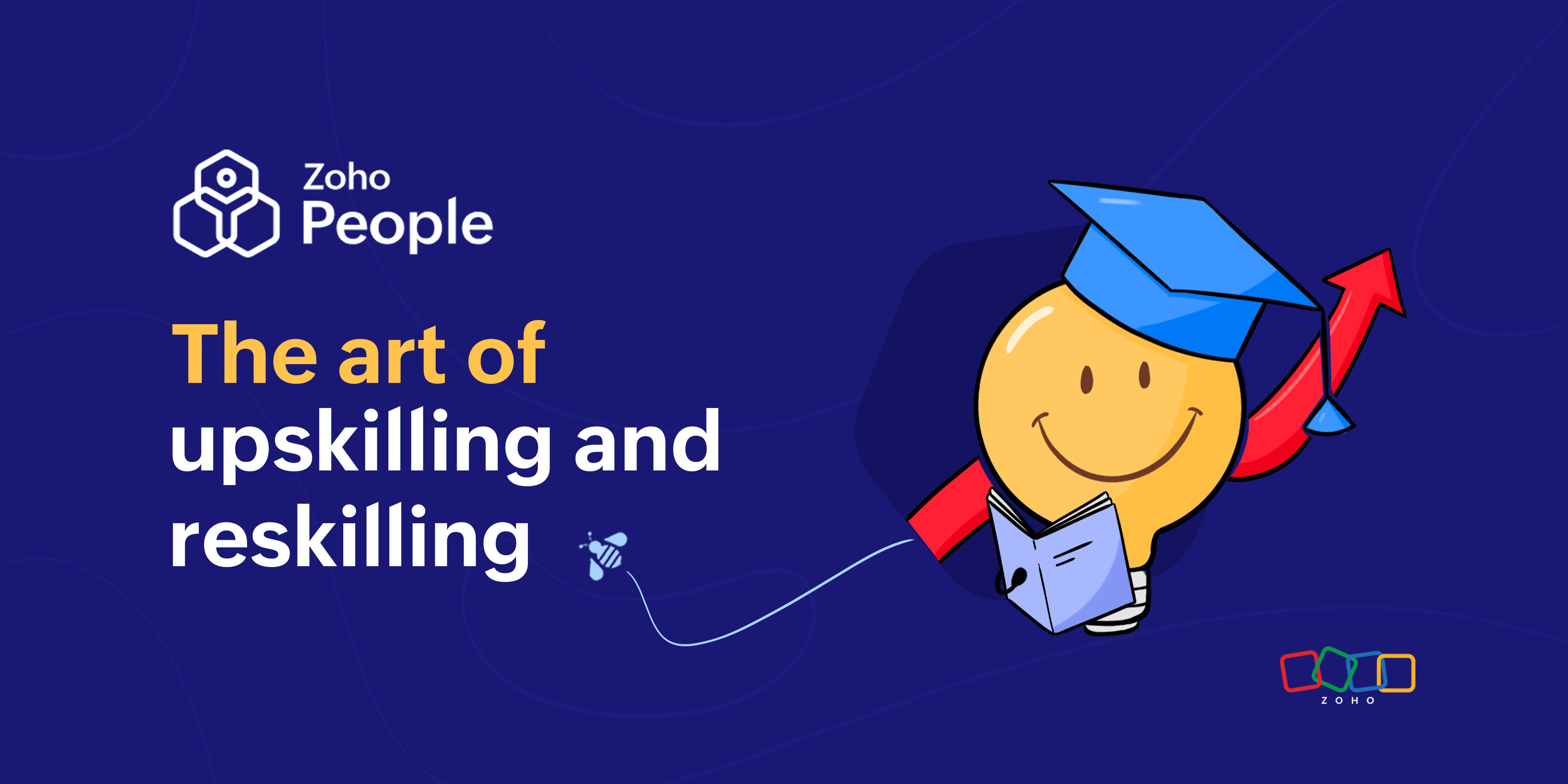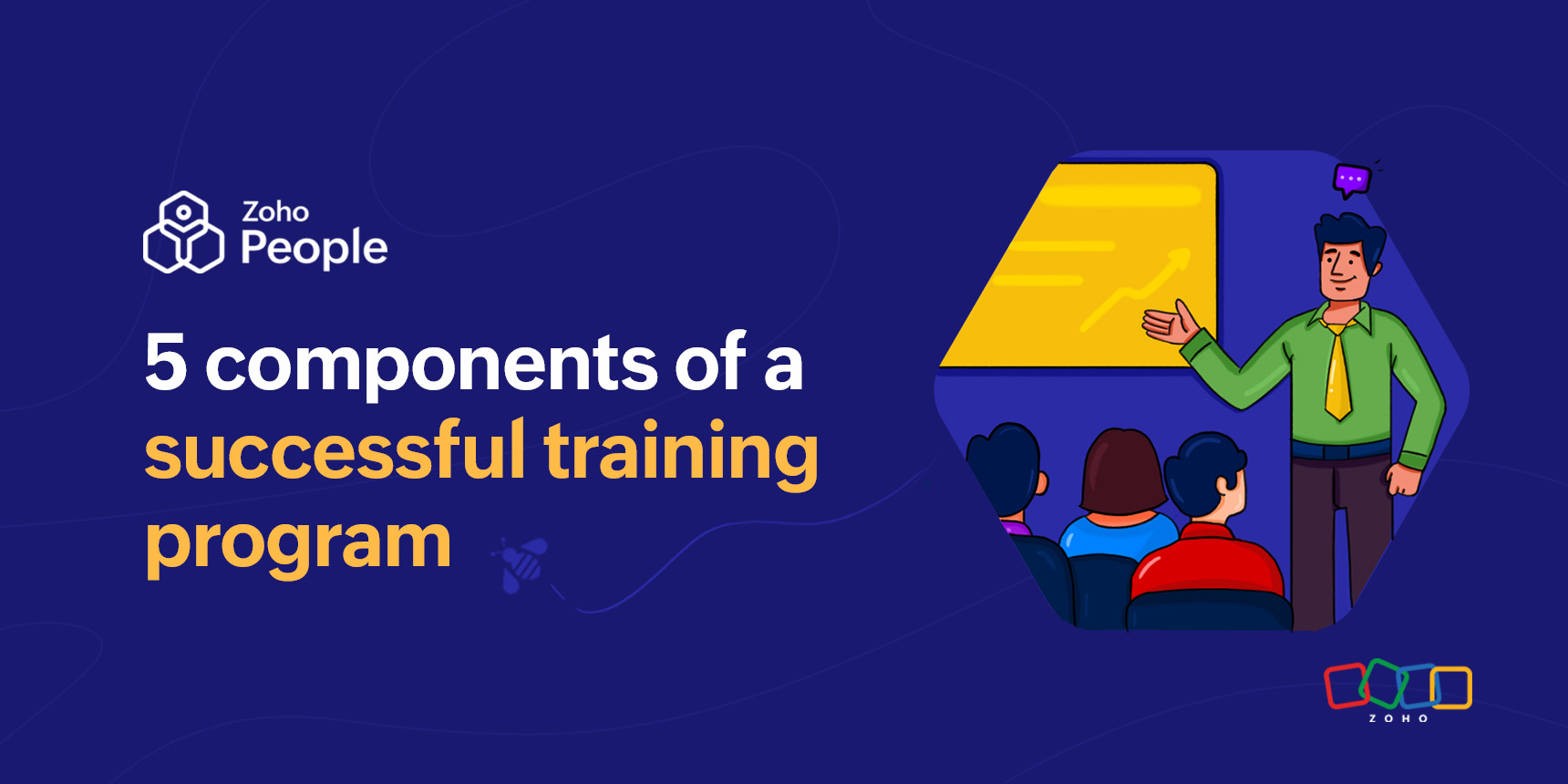- HOME
- More
- Learning and Development
- Crafting exceptional employee development and retention strategies
Crafting exceptional employee development and retention strategies
- Last Updated : May 28, 2024
- 275 Views
- 4 Min Read
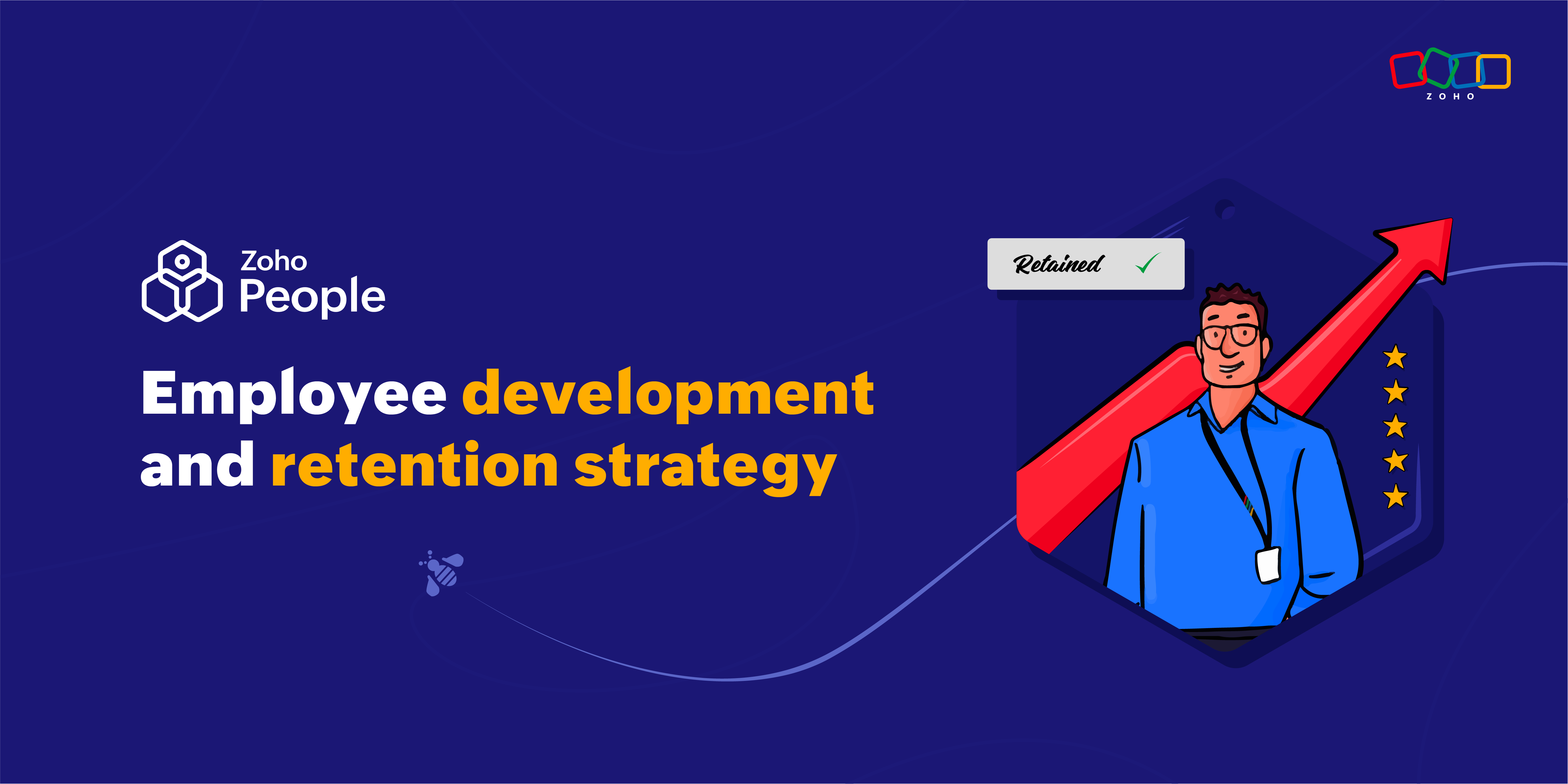
One of the biggest challenges organizations deal with is retaining and nurturing top talent. To keep employees satisfied, it's crucial to create an environment where they can engage with one another and voice their thoughts. Organizations should also focus on employee development, which involves implementing initiatives that cultivate a culture of growth and promote long-term retention.
Nurture your organization's talent
Continuous learning and development helps create an environment where employees are motivated to reach their fullest potential. Encourage your employees by providing access to courses, training programs, and a wide range of resources where they can expand their skill sets.
By providing a clear pathway for career advancement and internal mobility, you ensure your employees feel valued and motivate them to contribute to your organization's long-term growth.
Employees also thrive when they have a clear understanding of their career objectives. Make time to engage in regular discussions about their work goals, and collaborate with them to establish a feasible career development path that aligns with the organization's needs. Connecting employees' skills and interests with their roles makes it more likely that they'll find purpose in what they're doing.
Foster a culture of feedback
Asking for employee feedback is essential for understanding and satisfying their needs. Regular, friendly check-ins play a major role in promoting a comfortable environment for open communication.
Set up regular one-on-ones or team meetings where employees can discuss their progress, concerns, and ideas. These meetings should be scheduled based on the team's requirements, whether it's on a weekly or monthly basis. This fosters greater transparency and trust in the workplace, where employees feel they can approach their managers for support at any time.
It's also useful to encourage employees to share their thoughts through anonymous surveys or suggestion boxes. This can provide you with more qualitative feedback, as well as give employees a confidential way to submit feedback.
For the remote or distributed employees, use video calls, instant messaging, or other virtual collaboration tools to have quick, regular check-ins and ensure continuous communication.
Once you get 360 degree employee feedback, the process shouldn't end there. Take steps to initiate change, and continue checking in with employees for further suggestions. This shows them that the organization cares about their well-being, which leads to a boost in their productivity.
Building strong relationships
Trust is the foundation of any strong workplace relationship. Earning employee trust involves keeping your promises, following through on your commitments, and admitting when mistakes are made. Employees know that they can rely on you when you listen to them, understand their challenges, and respond with empathy.
Encourage team bonds by promoting mutual purpose during project collaborations. Organize cross-functional initiatives to help employees connect on a personal level. Be an example by participating in those initiatives.
It's also important to give employees the liberty to make their own decisions and take ownership of their work. Avoid micromanaging, and instead provide guidance and support when needed. This shows employees that you trust in their judgment and abilities, which can further improve your relationships.
Recognizing and rewarding excellence
Appreciating employees for their work helps them feel valued. It not only motivates them to sustain their exceptional work but also boosts morale and encourages others to strive for excellence. This aids in shaping the desired organizational culture.
Create opportunities to celebrate the achievements of your high-performing employees, such as during team meetings, company wide events, or through internal communication channels or newsletters. -Provide a range of reward options, including bonuses, salary raises, promotions, and non monetary rewards like additional time off and gift cards. Be sure these rewards are personalized and promptly delivered. This leads to increased loyalty, engagement, and overall organizational success.
Work-life balance
Burnout is a regular occurrence across workplaces. In order to reduce it, offer flexible options like access to remote login, adjustable schedules, or a compressed work week. This provides employees with greater authority over their schedules. Encourage employees to take regular breaks, and address the pattern of overwork to prevent future problems.
You can also organize wellness programs, design fitness challenges, and even offer on-site exercise facilities if possible. Encourage employees to participate in the new initiatives, and make it clear why their participation is important by holding open discussions about burnout and its prevention.
Avoid sending work-related messages outside of working hours unless it's crucial. Offer vouchers that support your employees' personal and family commitments. This shows respect for employees' personal time and helps them maintain a healthy separation between work and life.
Tips to improve work-life balance
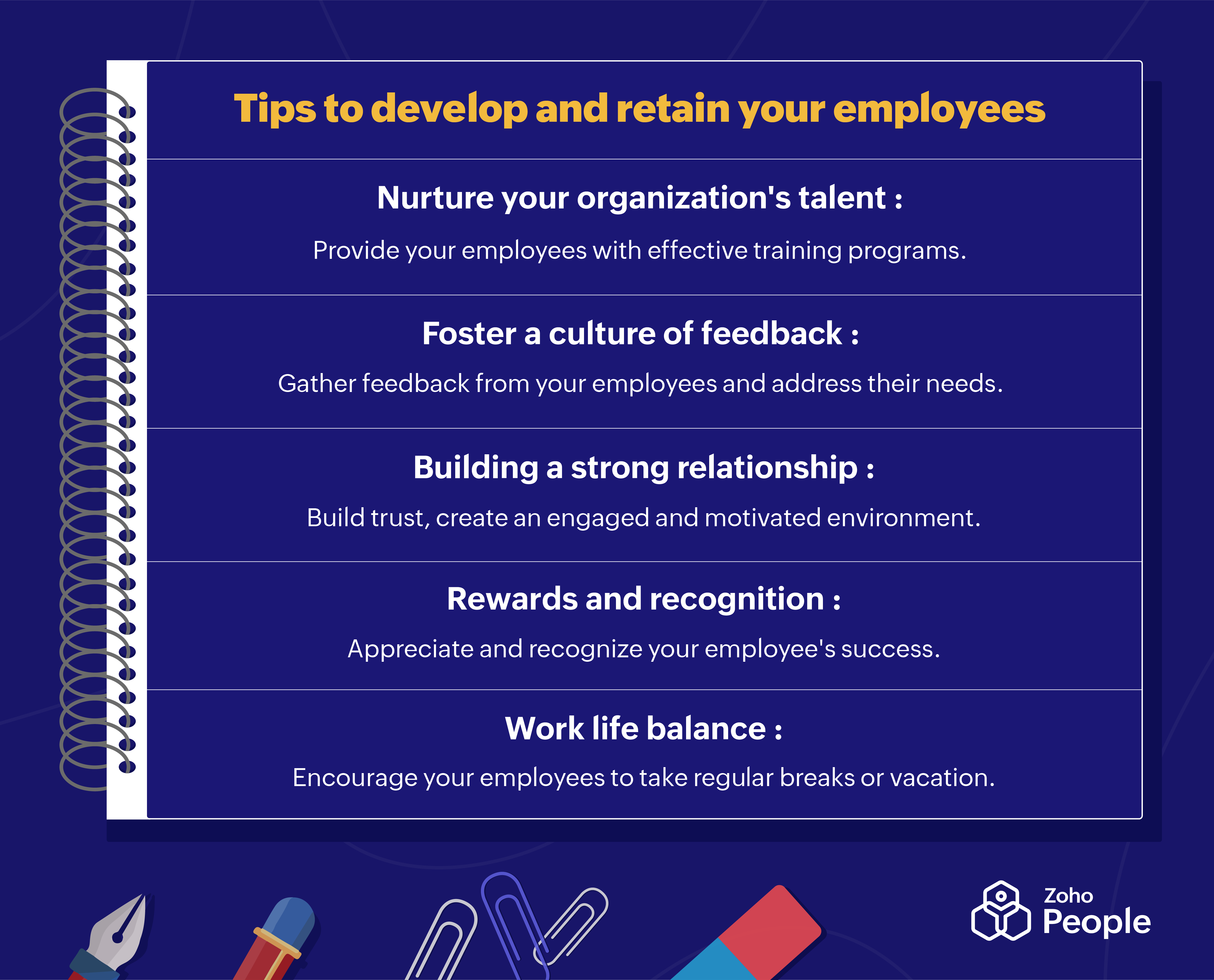
Wrapping up
Organizations must carefully analyze their unique workforce needs, corporate culture, and long-term goals to devise a comprehensive plan to nurture their most valued asset—their people. By seeking feedback from employees and establishing multiple avenues for employee growth and recognition, organizations can forge a path for constant growth and success.
